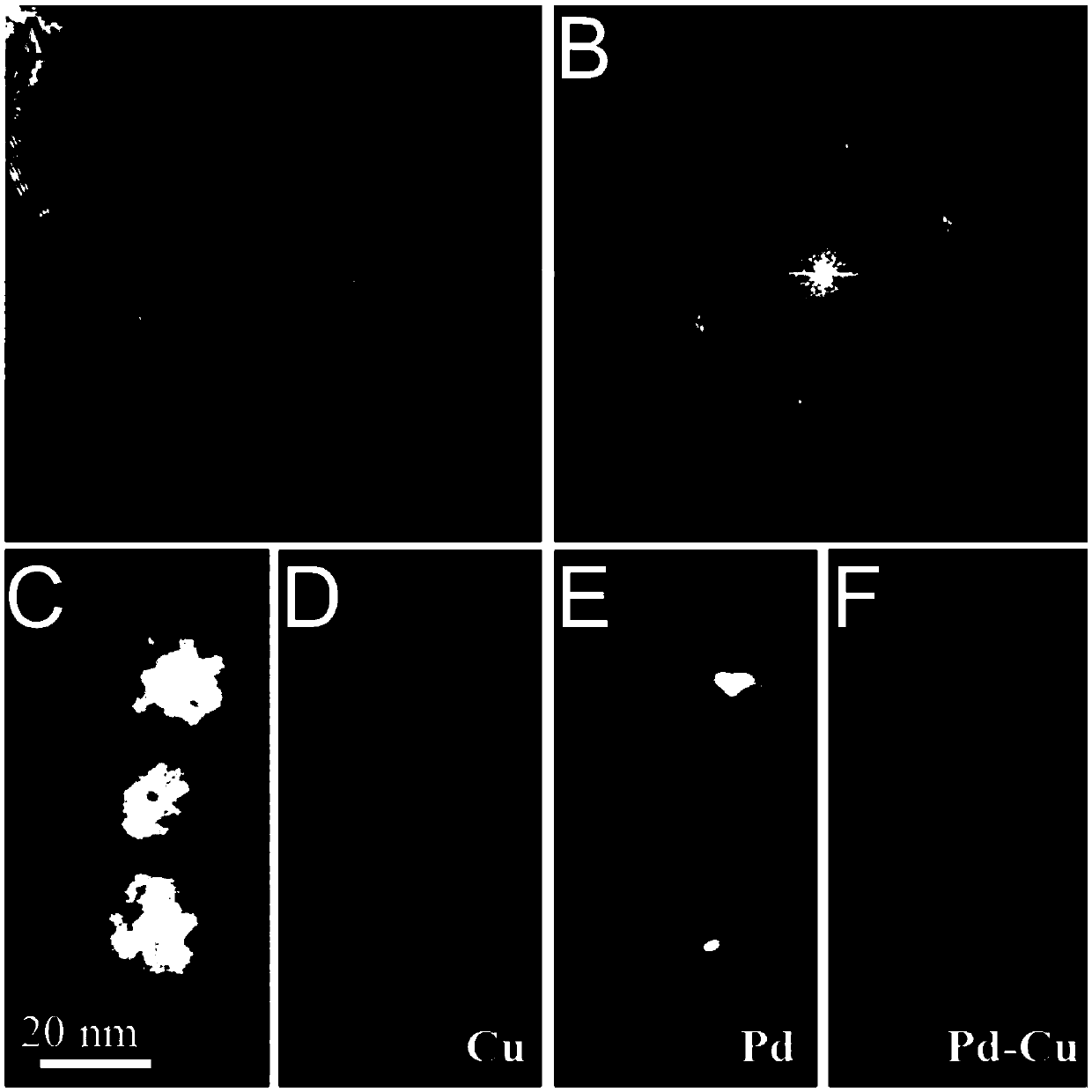Method of one-step synthesis of cluster type palladium-copper nano particles and application of cluster type palladium-copper nano particles
A nanoparticle and cluster technology, applied in nanotechnology, chemical instruments and methods, metal/metal oxide/metal hydroxide catalysts, etc., can solve the complex process of core-shell growth method, uneven particle size, nanoparticle Small particle size and other problems, to achieve the effect of improving the oxidation activity and stability of formic acid
- Summary
- Abstract
- Description
- Claims
- Application Information
AI Technical Summary
Problems solved by technology
Method used
Image
Examples
Embodiment 1
[0019] The present embodiment provides a method for synthesizing cluster-type palladium-copper nanoparticles in one step, which comprises the following steps:
[0020] Put a magnetic stir bar into the round bottom flask, add 40ml DMF (N,N-dimethylformamide), then add 0.1g PVP (polyvinylpyrrolidone, commercially available), start stirring to dissolve; add 0.03g Pd(acac) 2 , 0.005g Cu(acac) 2 Make the solution change from colorless to yellow-green. At this time, install a condenser, open the circulating condensed water, and stir fully to fully dissolve and mix evenly;
[0021] Immerse the round-bottomed flask in an oil bath and heat it to 100°C for reaction, keeping it for 10-18 hours (during this process, it can be observed that the color of the solution gradually becomes darker and finally turns black); after 18 hours, stop heating and stirring, and place the round-bottomed flask in a It can be cooled at room temperature; the obtained cluster type palladium copper nanopartic...
Embodiment 2
[0023] This embodiment provides a method for synthesizing cluster-type palladium-copper nanoparticles in one step, which is basically the same as that in Example 1, except that 0.03g Pd(acac) is added 2 and 0.015g Cu(acac) 2 .
Embodiment 3
[0025] This embodiment provides a method for synthesizing cluster-type palladium-copper nanoparticles in one step, which is basically the same as that in Example 1, except that 0.03g Pd(acac) is added 2 and 0.03g Cu(acac) 2 .
PUM
| Property | Measurement | Unit |
|---|---|---|
| diameter | aaaaa | aaaaa |
Abstract
Description
Claims
Application Information
 Login to View More
Login to View More - R&D
- Intellectual Property
- Life Sciences
- Materials
- Tech Scout
- Unparalleled Data Quality
- Higher Quality Content
- 60% Fewer Hallucinations
Browse by: Latest US Patents, China's latest patents, Technical Efficacy Thesaurus, Application Domain, Technology Topic, Popular Technical Reports.
© 2025 PatSnap. All rights reserved.Legal|Privacy policy|Modern Slavery Act Transparency Statement|Sitemap|About US| Contact US: help@patsnap.com



